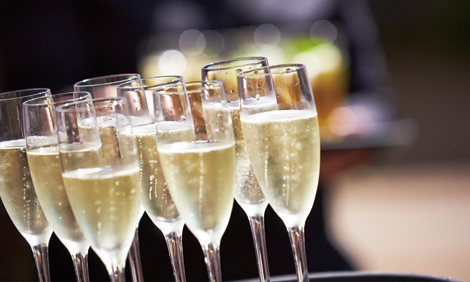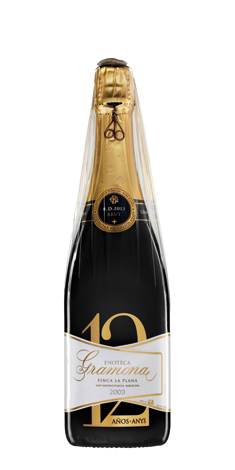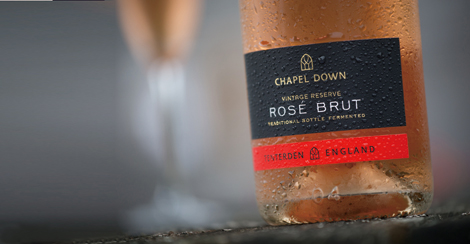Until recently, if you wanted to buy a bottle of Champagne or sparkling wine, your choices were pretty straightforward. There was a clear hierarchy with a very direct relationship to cost.
At the apex of the pyramid there were the top wines, cuvées de prestige, made by the top Champagne houses or Grandes Marques – and just below them
the non-vintage (NV) wines of the same houses – Bollinger, Krug, Louis Roederer, Moët & Chandon, Perrier-Jouët, Salon, Veuve Clicquot, and the other members of the Union des Maisons de Champagne (UMC).
Beneath them were the NV wines of smaller and cheaper producers from the Champagne region, then the other sparkling wines of France, and, finally – indiscriminately scattered at the bottom of the pile – sparkling wines made anywhere else in the world.
If you bought non-French bubbles, it was understood, it meant you couldn’t afford the real thing, and were probably planning to splash fruit juice into it anyway.
Times have changed. A new generation of Champagne lovers regards the Grandes Marques as old hat, and is more interested in “grower Champagnes” from small but quality-conscious producers such as Jacques Selosse, Eric Rodez, Vilmart, Bouchard and Godmé.
More radically still, they are interested in sparkling wines from other parts of the world. Today, Italy’s Prosecco, Spain’s Cava and the new generation of sparkling wines being made in England are increasingly gaining acceptance as interesting wines in their own right, and not merely as cheap substitutes for Champagne.

Many of those wines, not coincidentally, aren’t actually cheap – although none from outside the Champagne region yet commands quite the price of, for example, Krug’s rare Blanc de Noirs Clos d’Ambonnay, the 1996 or 1998 vintages of which are currently available from Berry Bros & Rudd (BBR) in Hong Kong for HK$15,200 (US$1,900) per bottle.
“The best quality non-Champagne sparkling wine is equivalent to good quality non-vintage Champagne in price,” says BBR senior account manager David Jones.
“If someone wants to spend HK$400 on a bottle of wine that will show nicely at a party, they are more likely to buy Champagne. It is going to be somebody fairly knowledgeable and interested in wine who is going to spend that on a bottle of English sparkling wine, or aged Cava.”
So how has Champagne acquired its special cachet? A cynic might point to a couple of hundred years’ worth of astute marketing, and that has certainly played its part, but so have the terroir of the region and the high quality of the winemaking.
The Méthode Champenoise – or, in whatever language may be pertinent, “traditional method” as the European Union insists that it be referred to when referring to wines made outside the Champagne region – consists of primary fermentation of the wines, followed by blending, a second fermentation in the bottle, ageing on the lees (for at least 15 months in the case of NV wines, and several years for vintages), and “riddling” – manual or mechanical agitation of the wine bottles so that the lees settle in the neck of the bottle and can be removed before “dosage”, which means topping up each bottle with a mixture of wine and sugar before the insertion of the cork.
Dosage determine the sweetness of the wine, and some notably dry Champagnes are made without it, but it is the only stage in the process which is optional, and bottle fermentation and long-ageing are both costly.
Something like this method is employed by quality-conscious producers of most non-Champagne sparkling wines in France, Cava in Spain and the sparkling wines of the British Isles and the New World.
“Any producer of sparkling wine who wants to get even close to rivalling Champagne is going to have to invest in the expense of 100 per cent bottle-fermented wines, although generally speaking they aren’t aged as long as Champagne,” says Jones.
The great exceptions to this rule are Italy’s Prosecco and Asti, which undergo their secondary fermentation in enamelled steel tanks. This process seems to suit certain Italian grape varieties best, although Franciacorta undergoes its secondary fermentation in the bottle. Secondary fermentation in the tank is also widely practised in the production of Sekt in Germany and Austria, and of sparkling wine in Russia.
Some cheaper New World sparkling wines, Jones adds, are produced by a hybrid process called the “transfer method”. This involves a limited period of secondary fermentation in the bottle, after which the wines are finished in a tank, which saves the expense of riddling.
More and more sparkling wine producers outside Champagne, however, are now focusing on quality and individuality and investing in traditional method production.
“There has been an increase in people looking at local grape varieties, local traditions and younger wine makers who are trying to put a bit more emphasis on quality and raise the standing of their local wine,” says Jones, who singles out artisan Prosecco producer Bele Casel as a name to follow.
“There is a generation trying to make quality Prosecco. It is never going to be a competitor to Champagne – it’s a wine for early drinking, but it is delicious. They are playing around with traditional styles such as unfiltered Colfondo, trying to reinvigorate the local culture.”
Hong Kong-based Master of Wine (MW) Debra Meiburg says that the sparkling wines of Franciacorta have also improved greatly in quality recently, as have Spain’s Cavas. “Franciacorta should claim its place in the world of sparkling wines but nobody can pronounce it,” she says.
“Cava is always fascinating because they make it by the traditional method, but they continue to use indigenous grape varieties, which gives the palate earthier, less delicate flavours. Champagne only has a handful of very subtle aromas, whereas cava is a little more forthcoming.”
Although Sekt is often dismissed as one dimensional, Meiburg believes that it too has something to offer as an alternative to Champagne.
“If you looking for a light, bubbly afternoon glass, Sekt is perfect. You will see more fruit character – you get the Riesling characteristics, whereas with Champagne much of the character comes from the winemaking itself, the sophisticated management of lees and storage and dosage and so on, while Sekt relies much more on its fruit,” she adds.
Meiburg also singles out the emergence of Southern England as a serious producer of quality sparkling wines as an interesting development.
“I think that’s a very exciting movement. Given that England often leads the world in new wine trends, it’s great to see them finally supporting their own industry. I think there is true awareness now that England can produce top-class sparkling wines. They are very light and elegant and interesting. I think if the weather conditions hold out, there will be a real place for English sparkling wine in the market.”
One of the English wineries that has gathered most praise is Chapel Down in Kent, and the winemaker there, Josh Donaghay-Spire, believes that the international horizons of sparkling wine are extending.
“Champagne has always been the benchmark in terms of quality for sparkling wine and those high standards still remain. England, however, is shaping up to be a real challenger at that very high level. In addition to exploring English sparkling wines I think there is some really interesting fizz coming from Franciacorta, Tasmania, and – if you spend a bit more than perhaps you’re used to and veer from the well-trodden path – then Cava also has some interesting options at the top end,” he says.

It is noteworthy that the sparkling wine regions Jones, Meiburg and Donaghay-Spire all focus on are in the Old World rather than the New.
“The New World seems to have lost its footing. Many of the top New World sparkling wines are joint ventures with the big Champagne houses, and so the Grandes Marques don’t see the need to support them outside the domestic markets in which they are made,” says Meiburg.
Jones agrees. “Anywhere in Australia, California or New Zealand they are using Chardonnay and Pinot Noir to mimic Champagne, and they are either doing it 100 per cent bottle fermented or saving some of the expense using the transfer method,” he says.
He does however single out Tasmania as an interesting up-and-coming area for sparkling wines, while Meiburg mentions California’s Sonoma County Iron Horse and J Vineyards and Winery, alongside the Macedon sparkling wines from the Hanging Rock Winery in Victoria, Australia, as good examples of interesting independent producers.
Are any of these regions a significant threat to Champagne as the world’s premier producer of high quality wine?
At the very top, not really. Even the best of the “grower Champagnes” cannot compete with the resources of the The Grandes Marques, and nothing from the New World so far can boast the subtlety and complexity of Krug, Dom Pérignon or Cristal.
Further down the scale however there are many sparkling wines that compete strongly, some of which, such as England’s Ridgeview, have beaten Champagnes in serious blind tastings.
Certainly non-Champagne sparkling wines are a growing sector. According to a report by the International Organisation of Vine and Wine global sparkling wine production has increased by 40 per cent over the last decade, to reach 17.6 million hectoliters in 2013. Champagne accounts for just 15 per cent of that.
Old World production is still well ahead of New, with France, Italy, Germany, Spain, and Russia jointly accounting for 74 per cent of the total. However, production is increasing steadily in North America and Australia, and spectacularly in South America. Over the last 10 years Argentina’s sparkling wine production is up by 198 per cent and Brazil’s by 248 per cent.
In value terms however, France, including Champagne, still dominates. It has 53 per cent of the market by value. And nobody launches a ship by cracking a bottle of Cava against it.
Dry or Sweet?

The terms used for degrees of sweetness in Champagne are widely employed for other sparkling wines, although not necessarily with the same precision. These are the degrees of residual sugar in Champagne.
Extra Brut – Less than 6 grammes of residual sugar per litre. The driest style.
Brut – Less than 12 grammes of residual sugar per litre.
Extra Dry – Between 12 and 17 grammes of residual sugar per litre.
Sec – Between 17 and 32 grammes of residual sugar per litre.
Demi-sec – Between 32 and 50 grammes of residual sugar per litre.
Doux – 50 grammes or more of residual sugar per litre. The sweetest style.
Glossary of fizz
Asti – A sparkling white wine from the Piedmont region of Italy.
Blanc de Blancs – A white wine made without red grapes, typically a Chardonnay.
Blanc de Noirs – A sparkling white wine made from red grapes, typically Pinot Noir.
Cava – A sparkling white wine from the Catalonia region of Spain.
Champagne – A sparkling white or rosé wine made from any or all of three grape varieties – Chardonnay, Pinot Noir and Pinot Meunier – within a delimited region of northern France.
Franciacorta – A white or rosé sparkling wine from the Lombardy region of Italy.
Prosecco – A sparkling white wine from the Veneto and Friuli regions of Italy.
New World – Anywhere other than Europe.
Old World – Europe.
Sekt – Sparkling wine produced in Germany and Austria.
Wines to Look Out For
Bodegas Gramona are widely regarded as the leaders in producing the new generation of high quality Spanish Cavas, using the traditional Macabeo,
Xarel-lo and Parellada grapes, along with some Chardonnay.
The leading producers of English sparkling wine are Chapel Down in Kent, Ridgeview in Sussex, and Camel Valley in Cornwall.
Jansz from the Pipers River region of Tasmania is regarded by many as Australia’s top sparkling wine producer.








